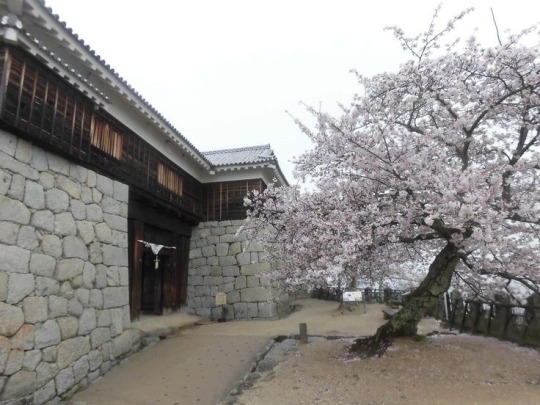#h1-key layouts
Explore tagged Tumblr posts
Text
୨୧ seoi ( h1key ) lockscreens.









#ask#lockscreens#wallpaper#kpop lockscreen#wallpapers kpop#kpop moodboard#gg wallpapers#gg kpop#kpop gg#gg moodboard#seoi#seoi h1key#seoi icons#h1 key#h1key seoi#gg pics#gg gifs#ggif#gg icons#gg layouts#gg lockscreens#gg lq icons#gg low quality#gg messy moodboard#gg messy icons#gg messy packs#gg imagines#gg idol#gg messy layouts#kpop music
71 notes
·
View notes
Text






✦ RANDOM ICONS 💬 like/reblog if use ✦
















#icons#headers#packs#layouts#120x120#kpop#moodboards#nct#h1 key#el7z up#enhypen#loona#yves#young posse#fromis 9#kiss of life#riize#nmixx
68 notes
·
View notes
Note
olá! você poderia fazer icons da seoi (h1-key) por favor? muito obrigada ㅠㅠ
𐙚˙⋆.˚ ᡣ𐭩









#seoi h1key#lee yejin#seoi icons#seoi moodboard#seoi lq#seoi#h1key icons#h1 key#kpop icons#kpop girls#kgoddesses#gg icons#gg messy moodboard#gg moodboard#gg messy icons#gg lq icons#gg layouts#kpop messy icons#gg messy packs#gg messy layouts#gg messy headers#lq moodboard#kpop messy moodboard#kpop messy layouts#kpop messy packs#messy packs#messy moodboard#messy layouts#female icons#lq ggs
17 notes
·
View notes
Text









#hyein#newjeans#sulli#nam joo hyuk#baby vox#yel#h1 key#victoria#krystal#f x#hanni#boa kwon#chuu#loona#artms#nayeon#twice#moodboard#icons#layout#messy#lq#uzzlang#kpop
250 notes
·
View notes
Text







୨୧ Ꮺ ⊹ never stop dreaming ⊹ Ꮺ ୨୧



#lipstickhua#moodboard#divider by @ plutism#gg moodboard#kpop moodboard#aesthetic moodboard#y2k moodboard#coquette moodboard#aesthetic#coquette#y2k#gg icons#gg layouts#kpop layouts#kpop icons#h1-key#h1-key moodboard#h1-key riina#riina#riina moodboard
31 notes
·
View notes
Text
✩ idea personalização .
bloqueio início geral



bloqueio início geral



☆ – se pegar curta, siga & reblogue !!
#kpop layouts#kpop moodboard#gg kpop#woliefairr#kpop gg#kpop icons#simple bios#ask#messy bios#ask blog#h1 key#h1 key icons#h1key seoi#seoi#h1 key riina#h1 key yel#h1 key edits#kpop girls#gg wallpapers#gg moodboard#gg gupt#gg messy moodboard#gg messy icons#gg messy layouts#gg icons#gg imagines#gg headers#tumblr girls#lockscreens#messy moodboard kpop
58 notes
·
View notes
Text



๋࣭ ★🎸🎧⋆。 °⋆๋࣭ ⊹ ࣪ ˖





19 notes
·
View notes
Text
𑁍ࠬܓ𓏲 ๋࣭ ࣪ Yel ꒰ h1key ꒱









#h1 key#yel#yel lockscreen#h1key moodboard#h1key lockscreen#h1key icons#loockscreen#kpop music#kpop icons#gg lockscreens#kpop layouts#lockscreen kpop#gg icons#gg moodboard#kpop group#girl group
13 notes
·
View notes
Note
H1-key yel locks pfv
' yel ( h1-key ) lockscreens ও









#yel lockscreens#yel icons#yel moodboard#yel h1-key#h1 key lockscreen#h1 key moodboard#h1-key moodboard#h1-key lockscreen#messy bios#gg lockscreens#kpop lockscreen#h1 key#kpop wallpaper#random lockscreens#random moodboard#lockscreens#wallpapers#kpop lockscreens#messy packs#messy locs#messy icons#messy layouts#messy moodboard#long locs#random long locs
12 notes
·
View notes
Text









h1-key member, yel !!
#kpop#gg icons#kpop girls#kpop icons#kpopidol#girls icons#kpop gg#twitter icons#kpop aesthetic#kpop layouts#h1key#yel h1 key#kpop pics#icons
17 notes
·
View notes
Note
oi dadaii, você poderia postar as locks dessa personalização?



#ask#lockscreens#wallpaper#kpop lockscreen#wallpapers kpop#kpop moodboard#gg wallpapers#gg kpop#kpop gg#gg moodboard#seoi#seoi h1key#h1 key#h1key seoi#gg pics#gg gifs#ggif#gg icons#ggnet#gg layouts#gg lockscreens#gg lq icons#gg messy moodboard#gg messy icons#gg messy packs#gg imagines#gg idol#gg packs#kpop music#kpop lyrics
70 notes
·
View notes
Text






tipi, tipi, tipi-tap, tap
#h1 key#kpop twt#headers#messy layouts#pinterest#kep1er#kep1er layouts#chaehyun messy layouts#chaehyun#tipi tap#monster high#red velvet messy headers#red velvet#twitter#joy layouts#joy#kpop pinned#kpop messy
3 notes
·
View notes
Note
olá! você poderia fazer icons da seoi (h1-key) por favor? muito obrigada
♡⭒๋࣭ ⭑ .ᐟ ᡣ𐭩









#h1key seoi#seoi icons#seoi moodboard#seoi lq#h1 key icons#h1 key#h1key mooboard#h1key#gg kpop#kpop icons#kgoddesses#kpop girls#gg icons#gg messy moodboard#gg moodboard#gg messy icons#gg lq icons#alternative moodboard#gg messy packs#gg messy headers#gg edits#kpop messy layouts#kpop messy headers#kpop messy packs#kpop messy icons#kpop#gg messy layouts#gg lockscreens#gg low quality#lq icons
32 notes
·
View notes
Text






❅༴ ⭒*.·¨⭒:·. 모든 게 반짝여 홀릴 듯이 .*⭒ :·᭧⠀⠀⠀
#͏ ͏ ͏ ͏ ͏ ͏ ͏ ͏ ͏ ͏ ͏ ͏ ͏ ͏ ͏ ͏ ͏ ͏ ͏ ͏ ͏ ͏ ͏ ͏ ͏ ͏ ͏ ͏ ͏ ͏ ͏ ͏ ͏ ͏ ͏ ͏ ͏ ͏ ͏ ͏ ͏ ͏ ͏ ͏ ͏ ͏ ͏ ͏ ͏ ͏#⠀⠀⠀⠀⠀⠀⠀⠀⠀𝓣𝔂𝓼𝓶 for the 1k followers and for accompanying me !If i made it this far it was thanks to you ' 𝓫𝓫𝔂 ~#⠀⠀⠀⠀⠀⠀⠀⠀⠀⠀hope to see ur presence 𝓪𝓵𝔀𝓪𝔂𝓼#⠀⠀⠀⠀⠀⠀⠀⠀⠀⠀⠀⠀⠀⠀⠀⠀⠀⠀⠀⠀⠀⠀⠀⠀⠀#🍞!#seoi moodboard#h1-key moodboard#seoi#aesthetic moodboard#archive moodboard#moodboard#carrd stuff#soft moodboard#visual archive#kpop messy moodboard#random moodboard#h1-key#kpop layouts#alternative moodboard#gg moodboard
163 notes
·
View notes
Text
```markdown
SEO Audit for WooCommerce: Boost Your E-commerce Success
In the competitive world of e-commerce, having a robust SEO strategy is crucial for driving traffic and increasing sales. WooCommerce, being one of the most popular platforms for building online stores, offers numerous opportunities to optimize your site for search engines. This article will guide you through a comprehensive SEO audit for your WooCommerce store, helping you identify areas for improvement and implement strategies that can significantly boost your online presence.
1. Technical SEO Audit
Start by ensuring your WooCommerce store is technically sound. Check for issues such as broken links, slow page load times, and mobile responsiveness. Tools like Google PageSpeed Insights and SEMrush can help you diagnose these problems. Additionally, ensure that your site has a clean sitemap and that all pages are properly indexed by search engines.
2. On-page SEO Optimization
Optimizing individual product pages is key to improving your store’s visibility in search results. Focus on high-quality content that includes relevant keywords, meta descriptions, and alt tags for images. Make sure each product description is unique and provides value to the customer. Use heading tags (H1, H2, etc.) appropriately to structure your content and make it easier for both users and search engines to understand.
3. Content Strategy
Content marketing plays a significant role in driving traffic to your WooCommerce store. Consider creating a blog where you can share industry news, tips, and guides related to your products. This not only helps in establishing your brand as an authority but also attracts backlinks from other websites, which can improve your search engine rankings.
4. User Experience
A positive user experience is essential for retaining visitors and converting them into customers. Ensure that your site is easy to navigate, with clear calls-to-action and a seamless checkout process. Pay attention to the design and layout of your store, making sure it is visually appealing and functional across all devices.
5. Analytics and Reporting
Regularly monitor your SEO efforts using tools like Google Analytics and Google Search Console. These tools provide valuable insights into how users interact with your site and what keywords are driving traffic. Use this data to refine your strategies and make informed decisions about future optimizations.
Conclusion
Performing a thorough SEO audit for your WooCommerce store is an ongoing process that requires continuous effort and adaptation. By addressing technical issues, optimizing on-page elements, developing a strong content strategy, enhancing user experience, and leveraging analytics, you can significantly improve your store’s visibility and drive more sales. What specific challenges have you faced with SEO for your WooCommerce store? Share your experiences and questions in the comments below!
```
This markdown-formatted article covers the key aspects of conducting an SEO audit for a WooCommerce store, providing actionable advice and encouraging reader engagement through a discussion prompt at the end.
加飞机@yuantou2048

王腾SEO
谷歌留痕
0 notes
Text
SEO Tips For Landing Page Layout – Optimize Your Pages for Higher Conversions
A well-optimized landing page is crucial for increasing conversions, attracting organic traffic, and improving user experience. If your landing page isn't structured properly, you could be losing potential customers. In this guide, we’ll share effective SEO tips for landing page layout to ensure your pages rank well and convert better.
1. Optimize Your URL Structure
Your landing page URL should be short, descriptive, and keyword-rich. Avoid long, complex URLs that are difficult for users and search engines to understand. For example:
Good URL: www.example.com/seo-tips-landing-page
Bad URL: www.example.com/page?id=12345&category=seo
A clean URL structure improves search engine visibility and click-through rates (CTR).
2. Use an SEO-Friendly Title Tag
Your title tag is one of the first things users and search engines see. Make sure it includes your target keyword and remains within 60 characters to avoid truncation in search results.
Example: "SEO Tips for Landing Page Layout – Boost Conversions & Rankings"
3. Craft a Compelling Meta Description
A well-written meta description can increase your CTR. Keep it between 150-160 characters and include your target keyword naturally.
Example: "Discover expert SEO tips for landing page layout to improve rankings and maximize conversions. Learn how to optimize your page for better results!"
4. Optimize Heading Tags (H1, H2, H3)
Use a clear and descriptive H1 tag that includes your keyword. Break up content with H2 and H3 tags to improve readability and structure.
Example:
H1: SEO Tips for Landing Page Layout – Optimize for Conversions
H2: Key Elements of an SEO-Optimized Landing Page
H3: How to Improve Page Load Speed
5. Improve Page Load Speed
Fast-loading pages enhance user experience and boost rankings. Use tools like Google PageSpeed Insights to analyze and optimize your landing page speed.
Ways to Improve Speed:
Compress images and use next-gen formats like WebP
Minimize JavaScript and CSS files
Enable browser caching
Use a Content Delivery Network (CDN)
6. Implement Mobile-Friendly Design
Since most users browse on mobile devices, ensure your landing page is mobile-responsive. Use Google’s Mobile-Friendly Test to check compatibility.
Tips for Mobile Optimization:
Use a responsive design
Ensure buttons and links are easily clickable
Optimize fonts and images for smaller screens
7. Use High-Quality Visuals & Multimedia
Images and videos can enhance engagement, but they must be optimized for SEO.
Best Practices:
Use descriptive file names (e.g., seo-tips-landing-page.jpg)
Add ALT text with relevant keywords
Use compressed images to reduce load time
8. Optimize Your Content for Keywords
Ensure your landing page content is valuable, relevant, and optimized for your target keyword. Avoid keyword stuffing and use related terms naturally.
Best Practices:
Use the primary keyword in the first 100 words
Incorporate long-tail variations
Write for users, not just search engines
9. Add Internal & External Links
Internal links improve navigation and keep users on your site longer. External links to authoritative sources build credibility.
Example:
Internal link: "Learn more about SEO best practices"
External link: "According to Google’s SEO guidelines, user experience is key."
10. Optimize for Featured Snippets
Format your content to appear in Google’s featured snippets, which can improve visibility and traffic.
Snippet Optimization Tips:
Use bullet points and numbered lists
Answer common questions concisely
Use structured data markup
11. Use Strong Call-to-Action (CTA)
A compelling CTA encourages conversions. Make sure your CTA is visible, actionable, and persuasive.
Examples:
"Download Your Free SEO Guide Now!"
"Start Your Free Trial Today!"
12. A/B Test Your Landing Page
Regularly test different elements of your landing page to see what works best.
Elements to Test:
Headline variations
CTA button colors and placement
Page layout and design
Conclusion
Optimizing your landing page layout using SEO best practices can significantly improve your search rankings and conversions. Focus on speed, mobile-friendliness, quality content, and strong CTAs to enhance user experience and achieve better results. Implement these SEO tips for landing page layout today and watch your conversions grow!
0 notes